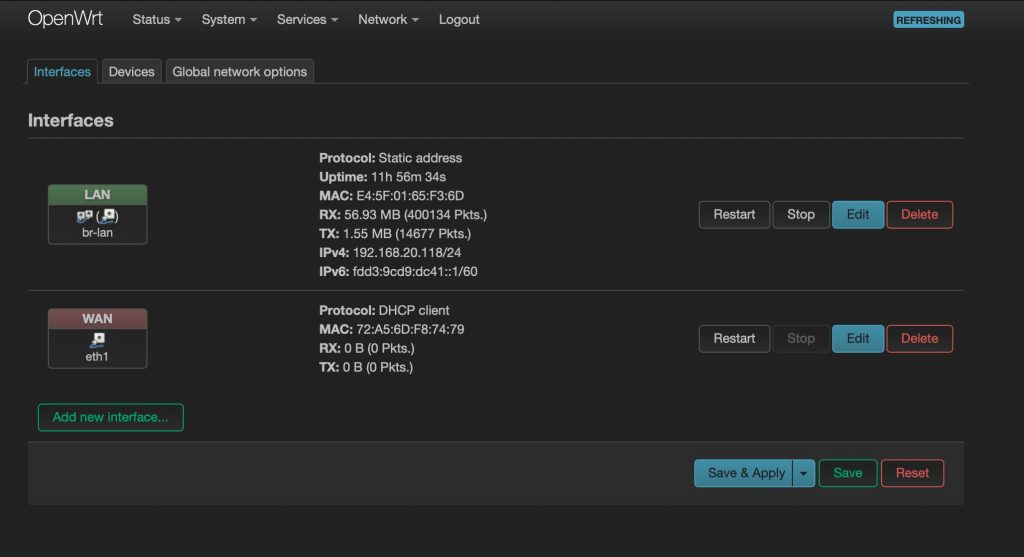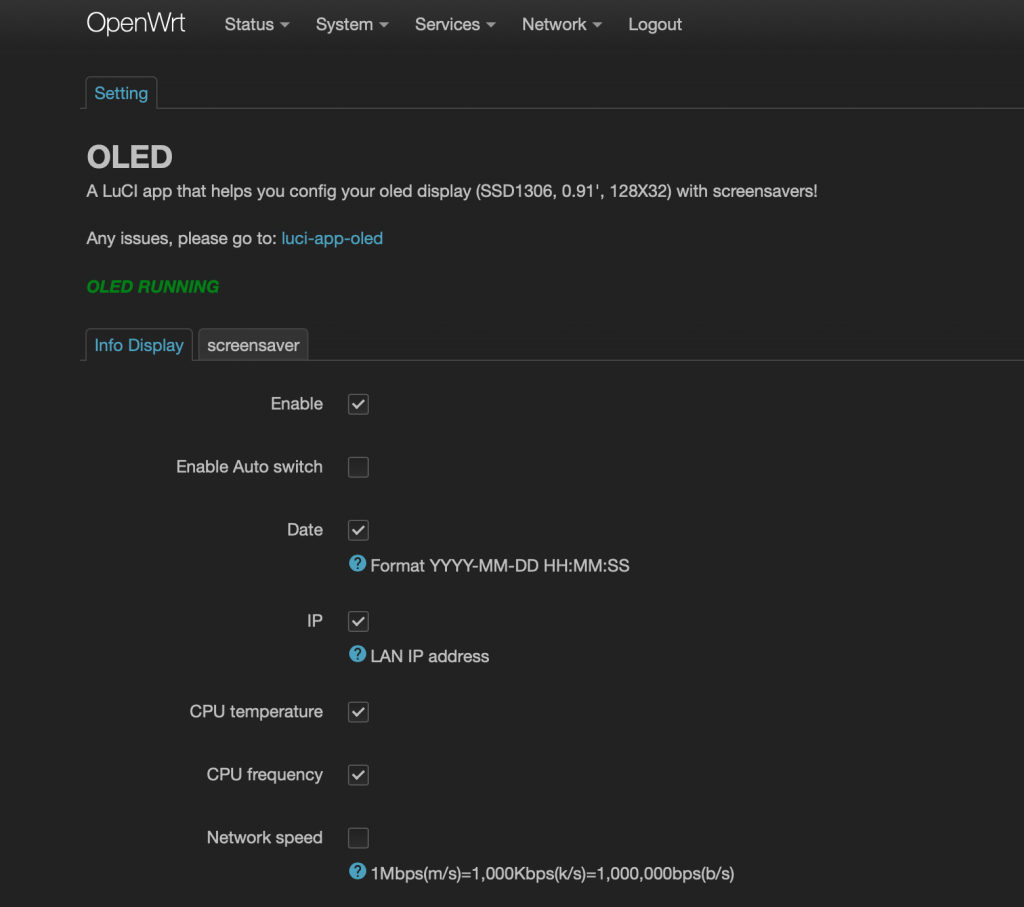I got my first Raspberry Compute Module 4 and installed it in a Geekpi CM4 Router Board. And then cue the fun. It is cool but it isn’t quite ready for plug and play prime time. It was quite a challenge to get everything running.
First of all there are several images to download on the GitHub page and I just wasn’t sure which one to use. The image that supposedly allowed the OLED display to work somehow or another didn’t have a working ETH1 wan port after installation. A router without a wan port isn’t worth a shit and it sure isn’t a router. Pardon my French.
So then the image with the ETH1 wan port working didn’t have a working OLED display. FML. In the great scheme of things the OLED being functional isn’t that important and that’s the direction I decided to go. Then I figured out how to get the OLED on which is a hack.
Here’s how it happened:
First install OpenWRT on your Compute Module by using this file from the Github link above.
openwrt-bcm2711-rpi-4-ext4-rtl8168-factory.img
This one has the functional wan port. But you have to add it manually (ETH1 = WAN)
WAN port depicted (click pic to enlarge)
And almost everything you need to get the OLED going is here.
If you go Services > OLED you’ll find that page is non functional. ssh into your Openwrt and issue these three commands.
opkg update opkg install luci-compat opkg install nano
The nano one isn’t totally necessary if you know how to use vi. I hate vi.
Once luci-compat is installed the page will work but you’ll get a message that says “OLED Not Running”. Crap.
So now you need to take nano and add a line of code.
nano /etc/init.d/oled
Add this line to the start() area:
ln -s /dev/i2c-1 /dev/i2c-0
It will look like this:
start() {
ln -s /dev/i2c-1 /dev/i2c-0
enabled=$(uci get oled.@oled[0].enable)
if [ $enabled -eq 0 ]; then
exit 0
fi
Hit Ctl + X and then Y to save. Now reboot. Navigate to the Services > OLED page and voila’. In Green it states “OLED Running”
OLED Running (click pic to enlarge)
Now everything works. Next up will be to add a hotspot so this device can be a travel router. Then maybe configure OpenVPN for security.
Guys like me like to fumble around with stuff and make it work but it seems like they could have a working OpenWRT image ready to roll. Just my opinion. You have to mess with it to make it work.



Thank you for sending me the link to your blog. I have tried the steps you did but it did not make the oled light up. I am using the flash file you referred to and flashed it using the raspberry pi imager and then went through the steps you took to turn the oled on. Once I took those steps, the page would show up and I was able to enable it. It says it is running but nothing is showing up on it even after a reboot. Were there any other steps that you performed that may not have been included in this discussion? Thank you again!
Not sure what it could be. I literally followed my own steps a few days ago and then set an RTL-SDR software defined radio up on the router so I can access the SDR on the network. My OLED is working fine. Could it possibly be a hardware problem? Have you ever seen it lit up?
No, I have not seen it light up so far. I have been going crazy trying to set this thing up and have tried several avenues just to ultimately guess that the oled is bad. I did a fresh flash with the file you stated and followed them exactly with no joy. I also did the chmod 755 /etc/init.d/oled and restarted it and then rebooted and nothing changed. I have tested the settings and it looks like it is setup properly, just zero response from the old. I will try to get a replacement on amazon. Thank you for trying to help!
One more thing. I think you may have to check a box on the OLED page to make it work. There is an “Enable” box on there.
Hey John, have you still got the Oled working with the latest stable version of Openwrt (23.05)? When I upgraded using the ‘sysupgrade’ image it removed the ‘Oled’ drop down menu from services and I tried following the same instructions in your article to no avail….
I haven’t messed with the router board for some time. I stole the CM4 for a Cell Hat project in my camper and then Pi availability got me.
Thanks for letting me know 🙂